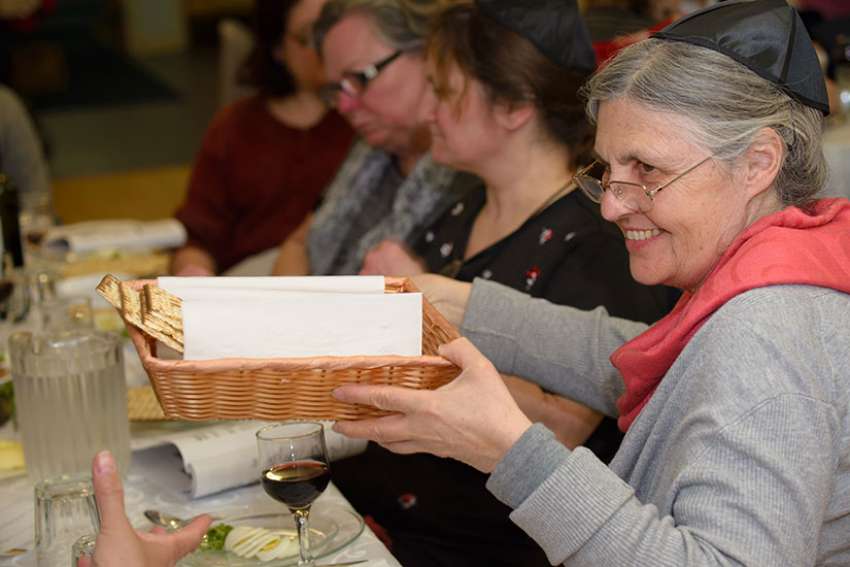Thorson was one of about three dozen Christians, Catholics and Protestants, who attended First Narayever’s fifth annual interfaith seder, the traditional meal that opens the eight-day celebration of Pesach or Passover.
As a Sister of Sion who has spent many years living in Israel and working on Christian-Jewish relations, Thorson has attended many seders but is still excited every time she is invited.
“Every time it’s a new experience,” she said. “I discover each time the richness of some of the symbols.”
The magic of the ritual meal which recounts the story of Israel’s liberation from bondage in Egypt is its ability to draw people together, said Thorson.
“We create community together. That’s really the gift of the Passover seder,” she said.
The interfaith event on March 27, co-ordinated between First Narayever and the Scarboro Missions interfaith office, was in fact two weeks prior to the first night of Pesach on the 15th day of Nisan in the Jewish lunar calendar – April 11 this year.
Staging a seder for Christians is always a happy event and an important opportunity, said Narayever’s Rabbi Ed Elkin.
“It’s an interesting point of contact between Christians and Jews. Christians are often interested in it. So, let’s build on that,” Elkin said.
Christians often equate the seder with Jesus’ last supper with his disciples in Jerusalem. While the last supper was indeed a ritual meal to celebrate the Passover and the Jewish people’s escape from slavery, it’s unlikely that it would have resembled a seder.
The seder is really a development of rabbinic Judaism which began after the destruction of the Jerusalem temple in 70 AD. It was largely adapted from the Greco-Roman practice of symposium meals, which were formal occasions for people of wealth and influence to meet and find common ground.
Following the Haggadah, a seder recounts the story of Israel’s escape from Egypt in 15 ritual actions and symbolic foods. The whole evening is designed to pass the story from one generation to the next, with games and questions designed to draw children into the evening.
The format, based on the Book of Exodus, also makes it easy for Christians who share the same sacred Scripture.
For Janet Horowitz the chance to bring Christian guests into her synagogue or shul and share her traditions is extremely important.
“I think of my shul as reaching out to the community,” she said. “You can turn yourself inward if you’re not careful.”

